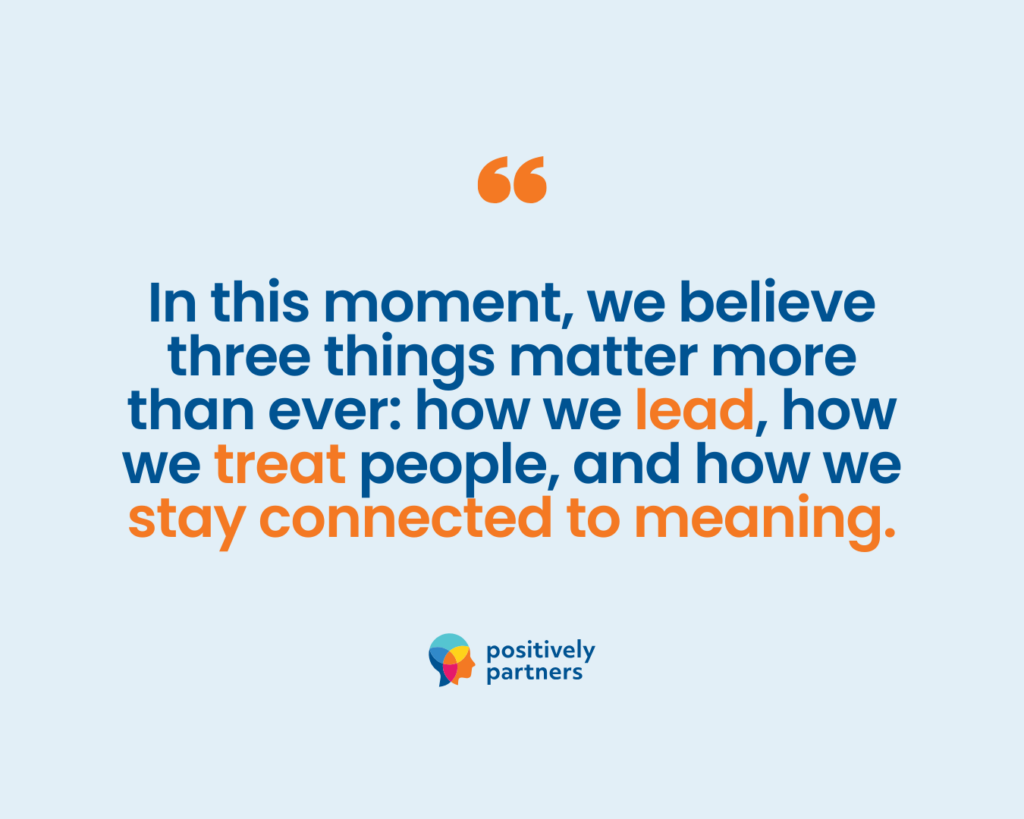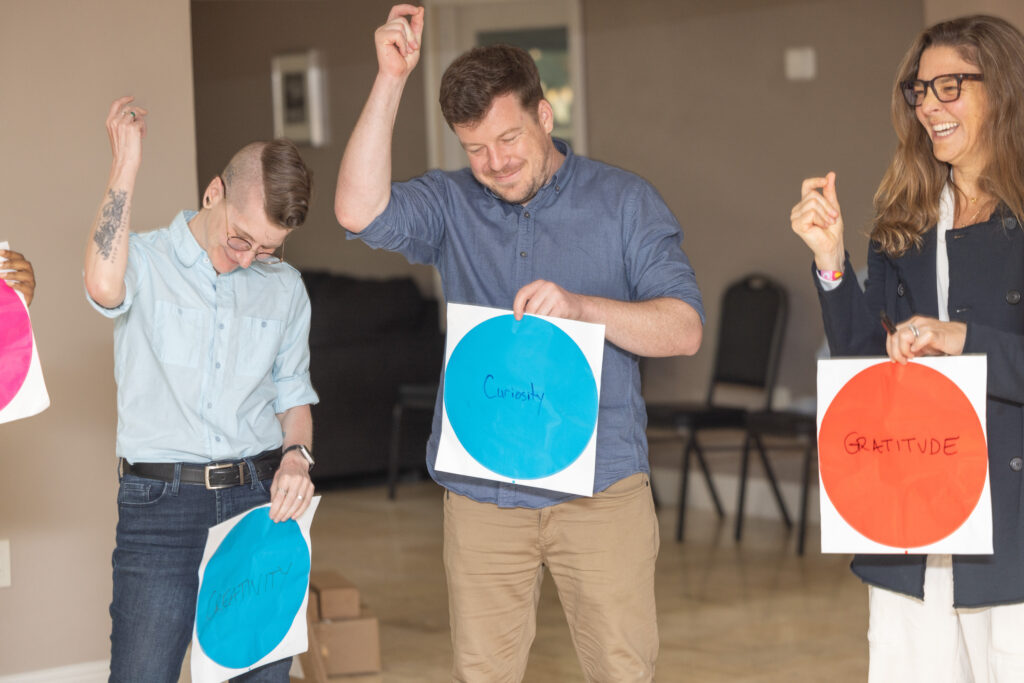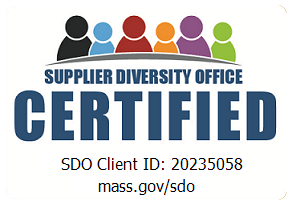What happens when you bring a team of organizational development professionals, HR strategists, and workplace culture nerds to the World Happiness Summit (WOHASU) during one of the most complex periods nonprofits have faced in years?
You come back with a powerful reminder: hope, meaning, and connection are not luxuries — they are lifelines.
This year’s theme was “Hope and Community,” and it couldn’t have come at a more urgent time.
Nonprofits are navigating immense pressure. Teams are stretched thin, funding is uncertain, and — in the wake of new federal priorities and executive actions — many organizations are facing difficult choices about their programs, staffing, and even how visibly they show up for their values.
In this moment, we believe three things matter more than ever: how we lead, how we treat people, and how we stay connected to meaning.

One of the most resonant ideas at WOHASU came from Dr. Arthur Brooks, who shared this formula:
Happiness = Enjoyment + Satisfaction + Meaning
Many of us in the nonprofit world feel like we should have meaning built into our work. After all, we’re here to make a difference, to serve a mission, to help communities thrive. And on paper, that purpose is clear.
But that doesn’t always mean we feel it in the day-to-day. The demands of the work—tight timelines, emotional labor, shifting priorities, limited resources—can dull our connection to that deeper sense of purpose. Sometimes we’re so focused on the next urgent task or deliverable that we lose sight of why we’re doing it in the first place.
And that disconnect? It can wear you down. When the emotional promise of the work doesn’t match the lived experience, it creates a kind of quiet fatigue. You might still care deeply, but feel increasingly distant from the passion or clarity that brought you here. You might keep showing up, but with a little less energy, a little less hope.
Brooks called it the “meaning doom loop.” When our days are packed with task lists, back-to-back meetings, and digital distractions, we often lose the space to reflect. We might be productive — but not fulfilled.
Breaking that cycle is deeply personal. It doesn’t require a sabbatical. It starts with three simple practices:
- Detox from tech, even briefly.
- Invite boredom. That’s when the brain’s default network lights up — the space where insight and meaning live.
- Ask the big questions. Not just “What needs to get done?” but “Why does this matter?” and “Who am I becoming?”
These aren’t indulgences. They’re what help us show up better — for our teams, our missions, and ourselves.
Here’s some additional insights we’re carrying forward from WOHASU 2025:
- Hope is a strategy. Psychologist Dan Tomasulo reminds us that hope isn’t just wishful thinking—it’s a skill we can build. When employees believe that things can improve and that they have a role in that progress, they’re more likely to stay engaged, even during tough times. Leaders can nurture this by taking just two minutes in team meetings to highlight a “hope signal”—a small win, a new insight, or a step forward. Then, connect it to the bigger picture with a simple message like: “This shows we’re making progress. We’re moving in the right direction.”
- Positive leaders build change-ready teams. Dr. Emma Seppälä’s research shows leaders who radiate positive relational energy—who listen deeply, forgive mistakes, and celebrate progress—create more resilient teams. Simple actions—like thanking a colleague, giving positive feedback, or checking in with curiosity—can boost team resilience just as powerfully as formal leadership behaviors.
- When people feel connected, they thrive. According to Gallup’s World Happiness Report, social connection is a powerful and consistent predictor of well-being. One simple way to build that connection? Share a meal. The latest report highlights that eating with others can significantly boost happiness and life satisfaction. It’s a small act that strengthens relationships and reinforces a sense of belonging at work.
At Positively Partners, we know budgets are tight and uncertainty is high. But your people– their hope, their clarity, their well-being– that’s what makes your mission sustainable. If you’re leading through change, trying to make thoughtful choices amid constraint, or just craving more meaning in your work, we’d love to support you.
Let’s build something better, together.









